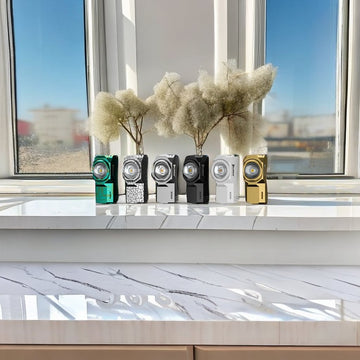
Lux is a term commonly used in the field of lighting, but what does it exactly mean? In the realm of illumination, lux serves as a vital metric that plays a significant role in achieving optimal lighting conditions. By delving deeper into the concept of lux, we can uncover its significance and gain a better understanding of its impact on our daily lives.
At its core, lux is a unit of measurement that quantifies the level of illumination or brightness perceived by the human eye. It provides an accurate means to evaluate the intensity of light within a given space. To truly grasp the essence of lux, let us delve into its definition and measurement in greater detail.
Lux, officially recognized as a derived unit of illuminance within the International System of Units (SI), is abbreviated as lx. It represents the amount of luminous flux distributed over a specific area. Put simply, it measures the quantity of light falling onto a surface per unit area. While lux and lumens are related, it is crucial to distinguish between the two.
The International System of Units offers a standardized framework for measuring various physical quantities, including lux. Lux stands apart from lumens, which measures the total amount of visible light emitted by a light source. In contrast, lux takes into account how that light is spread across a particular area.
To illustrate this, consider a spotlight with a high lumen output illuminating a small area, compared to the same amount of light dispersed across a larger area. In the former scenario, the lux value would be higher due to the concentration of light within a smaller space. Consequently, lux considers the spatial distribution of light, enabling us to assess the actual brightness experienced by individuals in a given environment.
The human eye is a remarkable organ that perceives light and enables us to experience the world around us. However, it has limitations in terms of sensitivity to different levels of brightness. This is where lux comes into play, helping us create lighting conditions that are comfortable and conducive to specific activities or settings.
Lux levels vary depending on the intended use of a space. For instance, higher lux levels are suitable for areas that require focused attention and precision, such as offices or workspaces. In contrast, lower lux levels are preferable in environments where relaxation and ambiance are prioritized, like residential living rooms or restaurants.
The significance of lux extends to lighting design, where it serves as a guiding principle for creating visually appealing and functional spaces. By understanding the different types of lighting and their lux requirements, designers can craft environments that cater to specific needs and enhance the overall experience.
Indoor lighting design encompasses three main categories: task lighting, ambient lighting, and accent lighting. Each of these lighting types serves a distinct purpose, and their optimal lux levels play a crucial role in achieving the desired effect.
Task lighting focuses on providing ample illumination for activities that require high visual acuity. In offices, for example, lux levels between 500 and 1,000 lx are recommended to promote productivity and reduce eye strain. Similarly, in kitchens or workstations, task lighting should be carefully designed to ensure proper visibility.
Ambient lighting, also known as general lighting, establishes the overall brightness level in a space. Lux levels for ambient lighting typically range from 100 to 300 lx, creating a comfortable and well-lit environment. This type of lighting is essential in living rooms, hallways, and other areas where general visibility is necessary.
Accent lighting serves a decorative purpose, emphasizing specific elements or objects within a space. It adds depth and visual interest by creating contrasts in light and shadow. Lux levels for accent lighting can vary significantly, depending on the desired effect and the area being illuminated. For instance, in art galleries or museums, accent lighting may reach lux levels of 1,500 or more to highlight artworks effectively.
Apart from understanding the different types of lighting, it is crucial to identify the optimal lux levels for various settings. Here are some general guidelines for different environments:
To accurately measure lux levels, lux meters and light sensors are used. Lux meters are handheld devices equipped with a sensor that captures the intensity of light falling on a surface. These meters provide instant readings, allowing professionals to assess the existing lighting conditions and make necessary adjustments.
Several factors can influence lux measurements. The distance between the light source and the surface being measured is a critical variable. As light spreads out, the lux levels decrease with distance. Additionally, the characteristics of the light source, such as its directionality and beam angle, impact lux levels. Furthermore, the reflectance and absorption properties of surfaces in the environment also affect the perceived brightness.
Lux is not merely a term confined to lighting professionals; it is a fundamental concept that affects our daily lives. Understanding the meaning and significance of lux enables us to create well-lit environments that cater to our needs, whether in our homes, offices, or public spaces. By considering the appropriate lux levels for different settings, we can ensure optimal illumination, visual comfort, and enhanced experiences in our illuminated world.
At its core, lux is a unit of measurement that quantifies the level of illumination or brightness perceived by the human eye. It provides an accurate means to evaluate the intensity of light within a given space. To truly grasp the essence of lux, let us delve into its definition and measurement in greater detail.
Lux, officially recognized as a derived unit of illuminance within the International System of Units (SI), is abbreviated as lx. It represents the amount of luminous flux distributed over a specific area. Put simply, it measures the quantity of light falling onto a surface per unit area. While lux and lumens are related, it is crucial to distinguish between the two.
The International System of Units offers a standardized framework for measuring various physical quantities, including lux. Lux stands apart from lumens, which measures the total amount of visible light emitted by a light source. In contrast, lux takes into account how that light is spread across a particular area.
To illustrate this, consider a spotlight with a high lumen output illuminating a small area, compared to the same amount of light dispersed across a larger area. In the former scenario, the lux value would be higher due to the concentration of light within a smaller space. Consequently, lux considers the spatial distribution of light, enabling us to assess the actual brightness experienced by individuals in a given environment.
The human eye is a remarkable organ that perceives light and enables us to experience the world around us. However, it has limitations in terms of sensitivity to different levels of brightness. This is where lux comes into play, helping us create lighting conditions that are comfortable and conducive to specific activities or settings.
Lux levels vary depending on the intended use of a space. For instance, higher lux levels are suitable for areas that require focused attention and precision, such as offices or workspaces. In contrast, lower lux levels are preferable in environments where relaxation and ambiance are prioritized, like residential living rooms or restaurants.
The significance of lux extends to lighting design, where it serves as a guiding principle for creating visually appealing and functional spaces. By understanding the different types of lighting and their lux requirements, designers can craft environments that cater to specific needs and enhance the overall experience.
Indoor lighting design encompasses three main categories: task lighting, ambient lighting, and accent lighting. Each of these lighting types serves a distinct purpose, and their optimal lux levels play a crucial role in achieving the desired effect.
Task lighting focuses on providing ample illumination for activities that require high visual acuity. In offices, for example, lux levels between 500 and 1,000 lx are recommended to promote productivity and reduce eye strain. Similarly, in kitchens or workstations, task lighting should be carefully designed to ensure proper visibility.
Ambient lighting, also known as general lighting, establishes the overall brightness level in a space. Lux levels for ambient lighting typically range from 100 to 300 lx, creating a comfortable and well-lit environment. This type of lighting is essential in living rooms, hallways, and other areas where general visibility is necessary.
Accent lighting serves a decorative purpose, emphasizing specific elements or objects within a space. It adds depth and visual interest by creating contrasts in light and shadow. Lux levels for accent lighting can vary significantly, depending on the desired effect and the area being illuminated. For instance, in art galleries or museums, accent lighting may reach lux levels of 1,500 or more to highlight artworks effectively.
Apart from understanding the different types of lighting, it is crucial to identify the optimal lux levels for various settings. Here are some general guidelines for different environments:
- Residential Spaces: Lux levels in residential spaces typically range from 100 to 300 lx for general lighting. Task lighting, such as reading lights or kitchen lighting, may require higher lux levels, ranging from 500 to 1,000 lx.
- Offices and Workplaces: To promote productivity and reduce eye strain, offices and workplaces benefit from task lighting with lux levels between 500 and 1,000 lx. Ambient lighting should be around 300 to 500 lx to create a comfortable working environment.
- Retail Stores and Showrooms: In retail settings, lighting plays a crucial role in showcasing products effectively. Ambient lighting levels between 500 and 1,000 lx are recommended, while accent lighting can go beyond 1,500 lx to highlight specific items or displays.
- Outdoor Areas: Lux levels in outdoor spaces vary widely depending on the purpose. Street lighting typically falls within the range of 10 to 20 lx, while stadiums or outdoor event venues may require significantly higher lux levels to ensure visibility and safety.
To accurately measure lux levels, lux meters and light sensors are used. Lux meters are handheld devices equipped with a sensor that captures the intensity of light falling on a surface. These meters provide instant readings, allowing professionals to assess the existing lighting conditions and make necessary adjustments.
Several factors can influence lux measurements. The distance between the light source and the surface being measured is a critical variable. As light spreads out, the lux levels decrease with distance. Additionally, the characteristics of the light source, such as its directionality and beam angle, impact lux levels. Furthermore, the reflectance and absorption properties of surfaces in the environment also affect the perceived brightness.
Lux is not merely a term confined to lighting professionals; it is a fundamental concept that affects our daily lives. Understanding the meaning and significance of lux enables us to create well-lit environments that cater to our needs, whether in our homes, offices, or public spaces. By considering the appropriate lux levels for different settings, we can ensure optimal illumination, visual comfort, and enhanced experiences in our illuminated world.
Tags:
Related Articles




